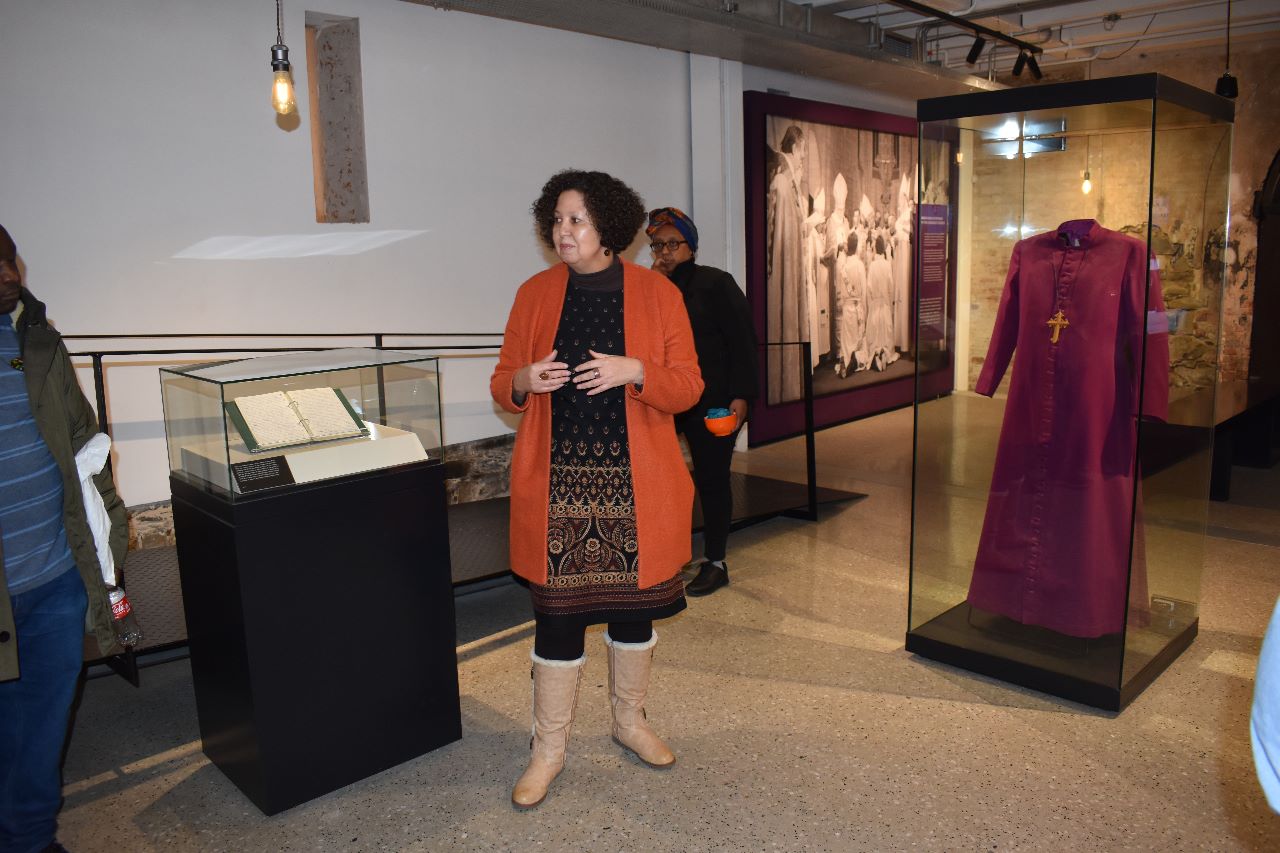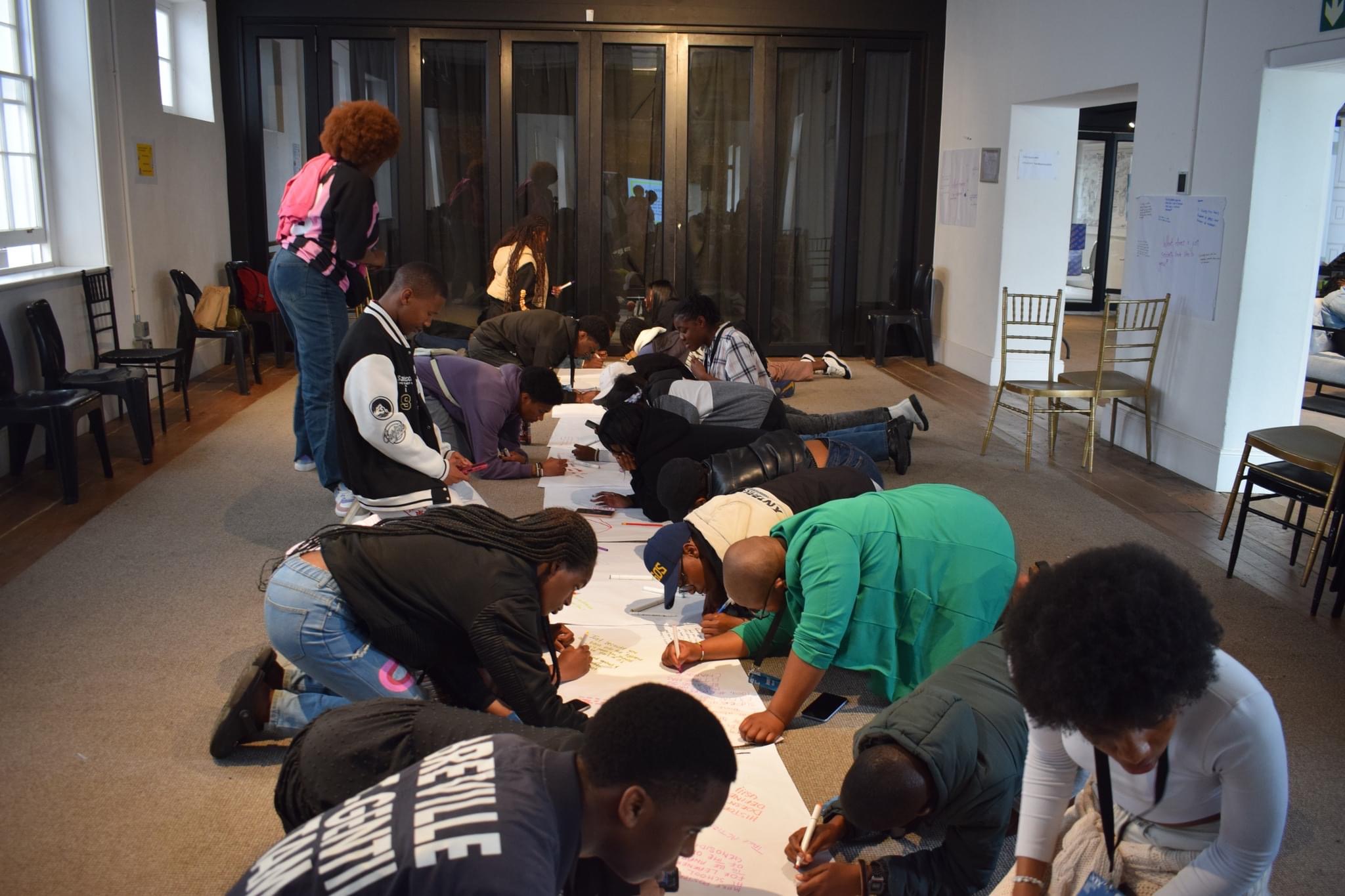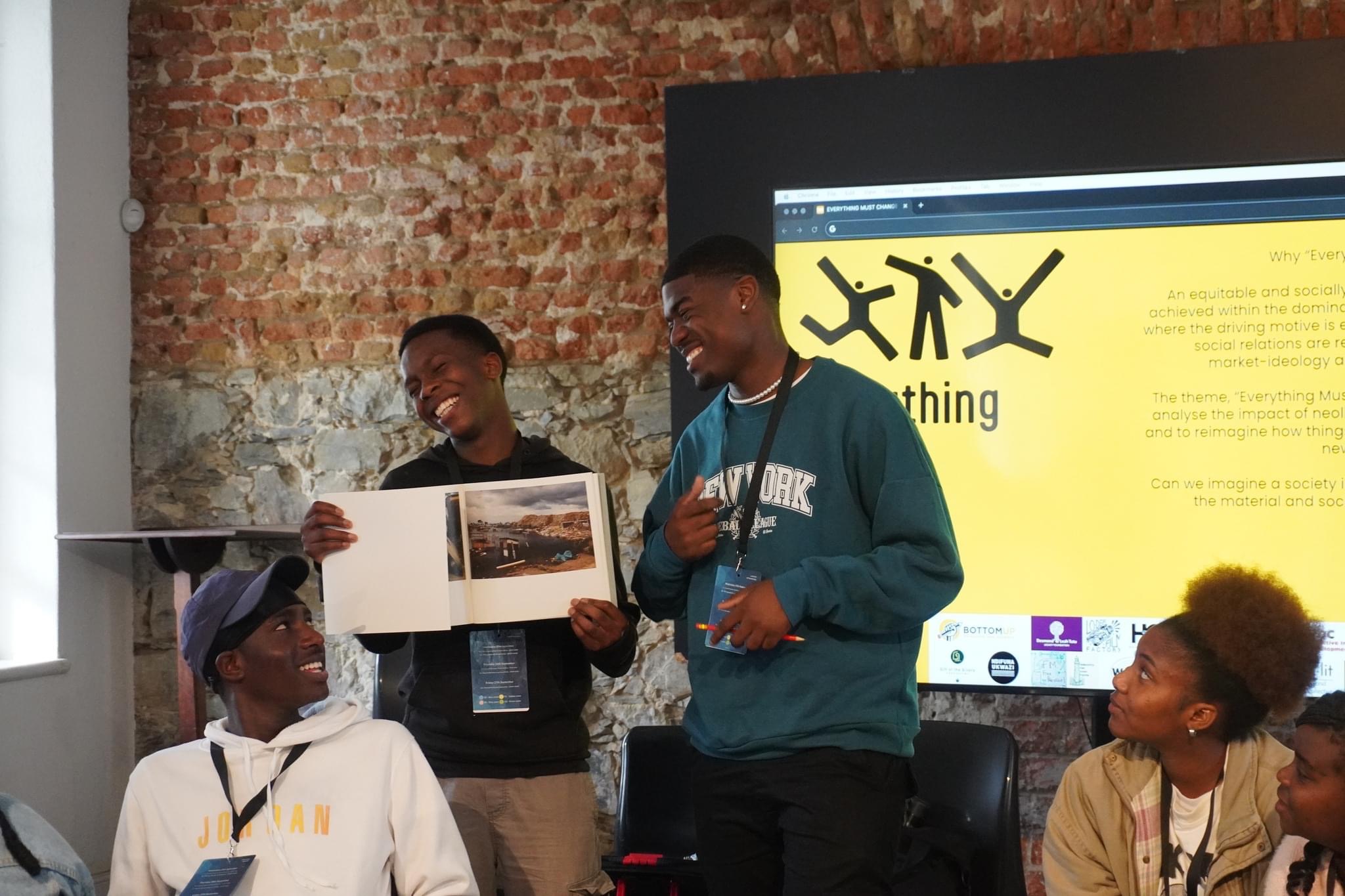Interview – To co-curate with youth for a better future with Charlene Houston
Interview 5/6: “To co-curate with youth for a better future”, with Charlene Houston
For the fifth episode of our ongoing series focused on the discussions and debates of the conference African Museums: Today and Tomorrow, produced by France Muséums and held at Louvre Abu Dhabi in January 2025, we interviewed Charlene Houston about how museums can involve a new generation of visitors, providing innovative, accessible experiences that reflect young audiences’ perspectives and aspirations.
Charlene Houston is a community-centred public historian. Very involved in matters such as anti-apartheid, decolonial and feminist activism, marginalised histories, and social learning, she championed these issues through various projects within several eminent South African institutions. For several years, and until recently, she was responsible for the Learning from Legacy program at The Desmond and Leah Tutu Legacy Foundation, overseeing exhibitions, educational and public programmes.
Could you introduce The Desmond and Leah Tutu Legacy Foundation Museum and share more about your work within it?
The Desmond and Leah Tutu Legacy Foundation is an institution established in 2011 to preserve and promote the legacy of Archbishop Desmond Tutu and his wife Leah Tutu. The Foundation is dedicated to fostering moral leadership, social justice, and societal healing, drawing inspiration from the Tutus’ lifelong commitment to human rights and reconciliation. The Foundation promotes these values through three main programmes: Leading for humanity, Advocacy for societal healing, and Learning from legacy.
These three programmes complement each other and serve a common purpose: to provide tools for visitors, especially young audiences or future leaders, for them to raise their voice and stand by their convictions. Various topics are covered via these programmes, such as the notions of democracy, justice and a fair future, the impacts and the roots of conflicts in South Africa and the rest of the world, peace and the memory of resistance.
The Learning from legacy programme revolves around the Foundation’s exhibitions to convey powerful messages to visitors. As the manager of this programme, my work centred around a permanent exhibition of the Foundation called “Truth to Power” that traces the anti-apartheid struggle in South Africa through the life and work of Archbishop Tutu and some of his allies. The objects and devices on display are meant to transmit the history of resistance in South Africa during apartheid and the work of the Truth and Reconciliation Commission thereafter, focusing on Desmond Tutu’s contribution. It also serves as a tool for us to develop educational and outreach programmes aimed at promoting the Tutus’ legacy.
With those various programmes, we have been thinking about how our Foundation can involve its young audiences, share experiences and create interesting spaces for discussion to talk freely about their future and their aspirations for it.
What space do you give to young people in your cultural programming?
One of the goals of the Foundation is, via the permanent exhibition and educational programmes based on it, to work with young people, targeting specific groups among them.
The schoolchildren are our first important target, as our exhibition content forms part of their school curriculum. The exhibition enriches their learning beyond the limitations of classroom instruction.
The Foundation also tries to reach young adults, especially activists involved in organisations or movements sharing the same values and goals, because they can shape an example out of Desmond and Leah Tutu’s life and messages to nurture their specific struggle. I can mention Bottomup, an organisation promoting youth leadership for social change in South Africa. The Foundation works with its leaders to attract youth to the exhibitions.
To attract young visitors outside of these main targets or who are not accustomed to visiting museums like schoolchildren, the Foundation also takes advantage of public holidays and commemorative days. We thus planned specific educational programmes for Youth Day in South Africa, Heritage Day, Freedom Day and so on. On such occasions, we will work with those young people involved in organisations or advocacy movements to be part of those programmes.
At the Foundation, we do think it’s important to do things in a participatory way so that young people are included, and they can help to shape what we’re doing as well.
How do you encourage the participation of the youth, how do you get them involved? Could you share examples of some programmes or activities specifically designed for the youth?
It is very important that the programmes we conceive are not simply lectures, theory and downward communication, which would make the young visitors we welcome, the passive recipients of knowledge. We try to create more of a transactional encounter: to encourage them to participate, we will engage them in activities.
Given South Africa’s past, the Foundation deems it crucial to place great importance on learning about history, and aspires to instil historical and civic awareness in the younger generations.
To achieve this objective, we tailor programmes to each of our young target audiences, and first and foremost students. We have a programme for each grade, and we accompany children and teenagers throughout their studies as they learn about the recent history of the country. This teaching of history also pays attention to democratic and civic awareness, in accordance with Desmond and Leah Tutu’s values.
For instance, the activities focus on different themes like peace or democracy, the aim being for them to share their experience, to express how they feel, and from there, we build the activity together. Usually, the youth would opt for a creative activity to consolidate what they have learned. Game-based programmes are also offered for them to take interest in the permanent exhibition and find answers on their own. It would typically be a scavenger hunt inside the exhibition.
We also work to help them develop an awareness of citizenship and what it means. Through different activities, we encourage them to raise their voice, so they understand that their voice and opinion matter.
In this perspective, the Democracy and Citizenship programme has been designed for sixth graders to understand what it is to be in a democracy and what active citizenship is about. Role playing games are also a way to get them engaged and understand those concepts: the Four Corner Debate allows them to share their opinion on a matter and to listen to opinions different from theirs. The goal here is to practice showing respect for the opinion of others and encourage the idea that positions can change after hearing another’s views.
WHY IS IT IMPORTANT TO TURN TO YOUNG PEOPLE TO REINVENT THE ROLE OF THE MUSEUM?
It is important for young people to know the history of the country so that they can understand what point we are at in our history, currently. Furthermore, they can learn from the past by rereading it through their own lenses and thus acquire tools, develop skills and values that will take them further as they embark on struggles to make a better life for themselves.
So, part of what we’re doing also by bringing youth together from different communities, is exposing them to one another.
I think it’s important to co-create and co-curate with our target audiences. Museums must be places of interaction and reciprocal exchange, as well, where we, as curators and museum professionals, can learn from the youth as much as they learn from their experience inside the museum.
I do think that a museum, at this point in time, should be a venue for social learning and a transactional space, where we can exchange ideas with one another and explore pathways to a more sustainable world.
Why are these spaces for dialogue, like the Abu Dhabi conference, so important?
The conference was a very enriching experience. Events like this are ideal opportunities to discover and explore the work of other institutions, and see how they tackle similar challenges in different contexts. It’s a chance to see our profession from a new perspective, and to be inspired by alternative approaches to practice. We can dive into the heart of another institution, observe how audiences interact and dare to expose ourselves to other ways of communicating and working.
Beyond the formal sessions, the conference also offered a valuable chance to connect with fellow practitioners and professionals. These informal exchanges allow us to dive deeper into discussions about our work, share insights, and reflect on our respective practices. Meeting others in this setting not only helps expand our professional network but also opens the door to future collaborations and resource sharing.
To learn more about the conference produced by France Muséums for Louvre Abu Dhabi




